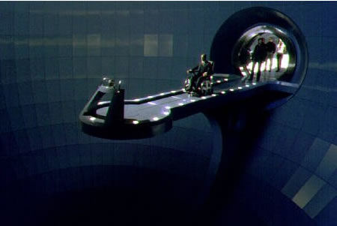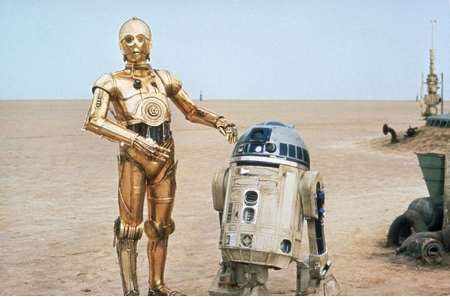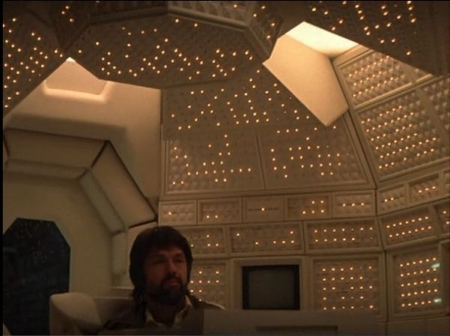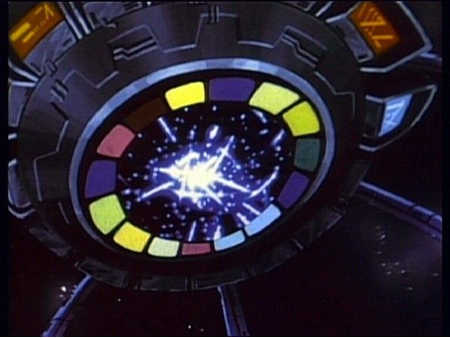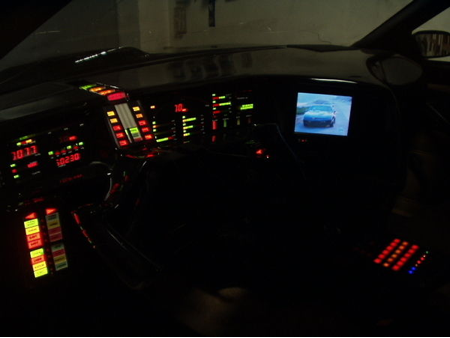In Pictures: 30 Famous Fictional Computers
Fiction is often a far cry from reality, and there’s no better example than the computer systems featured in movies, TV shows, books, and comics. Today we’re showcasing some of the most notorious machines from works of fiction.
Tom's Top 30, In Chronological Order
It seems like Hollywood’s goal is to get as far as possible from the real computers that left their mark on our epoch, as seen in Iconic Machines from Computing History. And yet, many of these fictional works have influenced our culture by producing machines that are sometimes more famous than actual historical systems. We decided to take a look back at 30 imaginary computers that defined their genres and left an indelible stamp on popular culture.
Our definition of “computer” is broadened to include artificial intelligence and robots, and while the list is in chronological order of appearance, the illustrations are mostly anachronistic. Let’s kick this journey off in the world of comic books, way back in the 1960s…
1964: Cerebro (X-Men)
Cerebro, also known as Cerebra, is the computer used by Charles Xavier to find mutants around the world. The machine made its first appearance in 1964’s X-Men #7 (volume 1). Operating with the help of Xavier’s telepathic gifts, the Cerebro amplified his brain waves to detect mutants.
1968: Duotronics (Star Trek)
Duotronics is the computer system designed by Dr. Richard Daystrom in 2243. It was built into Constitution-class starships such as the USS Enterprise. Made up of advanced circuits, Duotronics processed and analyzed information from the ship’s various sensor arrays. The term “Duotronics” was first mentioned in season two, episode 24 of Star Trek, entitled “The Ultimate Computer,” released March 8, 1968.
1968: HAL 9000 (2001: A Space Odyssey)
HAL 9000 (Heuristically-programmed ALgorithmic computer) is the artificial intelligence system that controls the Discovery One in Arthur C. Clarke and Stanley Kubrick’s famous 2001: A Space Odyssey. Represented by an eye in the form of a camera lens, HAL first became operational on January 12, 1992 in a laboratory in Illinois. Among many other abilities, HAL 9000 can read lips, appreciate art, reproduce emotions, and play chess.
1977: C-3PO (Star Wars)
Of the artificial intelligences, robots, and computers in this round-up, we have a soft spot for C–3PO. The golden humanoid robot is fluent in over six million forms of communication. His function is to aid in intercultural relations by reconciling the customs and languages of the various and diverse individuals in the Star Wars galaxy. In 1999’s Star Wars Episode I: The Phantom Menace, we learned that C-3PO was built by none other than Anakin Skywalker.
1979: Deep Thought (The Hitchhiker’s Guide To The Galaxy)
Deep Thought appears in the book The Hitchhiker’s Guide to the Galaxy by Douglas Adams. It is the name of the supercomputer that, after seven-and-a-half million years of calculations, affirms that the answer to the ultimate question of life, the universe, and everything is…42. Unfortunately, the machine is incapable of formulating that ultimate question, but instead designed another computer that could: Earth. In honor of the novel, IBM named one of its early chess-playing supercomputers Deep Thought, a precursor to the company’s famous Deep Blue.
Get Tom's Hardware's best news and in-depth reviews, straight to your inbox.
1979: Mother (Alien)
MU-TH-UR 6000, familiarly knows as Mother, is the data center aboard the USCSS Nostromo in Ridley Scott’s 1979 film Alien. Mother manages all of the ship’s functions, including piloting it while the crew is in hypersleep. It is capable of communicating with humans via an intercom system, though the Nostromo also has a room that serves as an interface. Mother is often perceived as an enemy of the protagonists when its built-in protocols become an additional hurdle to their survival.
1981: Shirka (Ulysses 31)
Shirka (also called Schyrka or Skyrka) is the main computer that controls the Odyssey, Ulysses’ ship in the Franco-Japanese animated television series Ulysses 31. At the start of the series, Ulysses kills the Cyclops to save his son. Zeus is furious and erases the path leading to Earth from Shirka’s memory. The computer’s name may seem strange, since it seems to bear no relation to Greek mythology, which is the theme of the series. However, a closer look at the computer’s Japanese name, Shiruka, reveals that it is the katakana form of Circe, a Greek sorceress.
1982: MCP (TRON)
MCP (Master Control Program) is the tyrannical computer designed by Walter Gibbs and optimized by Ed Dillinger. Originally designed to play chess, Dillinger’s optimizations enable the MCP to administer the ENCOM company’s network and finally take control of it and the other programs in the system. MCP is destroyed in the original 1982 film, but makes a brief appearance in the 2005 comic strip Tron: The Ghost in the Machine.
1982: KITT (Knight Rider)
KITT (Knight Industries Two Thousand) is the artificial intelligence inside the famous Pontiac Trans-Am Knight Rider. Its Knight 2000 processor was from a U.S. government computer. Apparently, the car's reaction time was one nanosecond, and its memory capacity was 1,000 Mb. KITT also controlled the vehicle’s “turbo boost” feature and could even drive the car itself.
1983: WOPR (WarGames)
WOPR, or War Operation Plan Response (pronounced “Whopper”), is the U.S Army’s artificial intelligence machine capable of simulating numerous combat strategies. It is used in designing and planning attacks and counterattacks in the 1983 film WarGames, starring Matthew Broderick and Ally Sheedy. The machine is also referred to as Joshua, after its designer’s deceased son.
-
vmem I like how many of us now have cellphones that replicate some of these famous computer's abilities :)Reply -
wildkitten Reply10888966 said:i hate these type of filler articles on a Friday.
I wouldn't call it filler. I think enthusiasts often look at science fiction for inspiration and that inspiration drives innovation.
Would we have smartphones with the capabilities they have today if it weren't for the Star Trek communicator driving people's imaginations?
If it weren't for people asking themselves "what if?" I don't believe that we would have near the wonderful devices we do today. -
mayankleoboy1 ^ I want pointing to this specific article, but to the general "30 of the blah blah blah" picture slideshows that are posted in lieu of a genuine article, on most fridays.Reply -
Memnarchon In Ulysses 31 episode 22, there was a super computer called "Cortex" that controlled an entire planet.Reply -
Immaculate Where is the Fallout computer? I guess it was kind of dumb and easy to convince thoughReply -
de5_Roy person of interest's 'the machine', csi tv series' computer systems that compare dna results and other data instantly, automan etc.Reply -
Izuall Im surprised SHODAN(SS2) isnt on the list.Gives me the creeps just by thinking about it.Reply -
assasin32 Reply10889570 said:person of interest's 'the machine', csi tv series' computer systems that compare dna results and other data instantly, automan etc.
Don't forget it also does fingerprints in CSI as well. And when the machine is down they have to do it "old school" and it will take awhile, and have have the fingerprints displayed on what is probably 2x 60+in screens in the background. Despite them showing the prints for no more than 1 second I could tell you they were not the same print, heck they weren't even the same type of finger print. I could go on with all the stupid things they do with computers in that show.
And remember kids if you don't like this post I watch CSI "I create a GUI interface using visual basic see if I can track an IP address."

